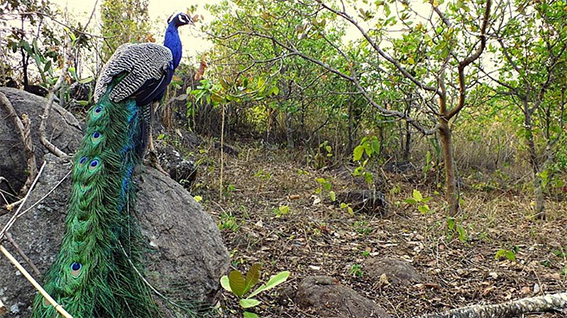Important Facts For Prelims
Indian Peafowl
- 05 Oct 2021
- 2 min read
Why in news
Recently, a man was hit by a peafowl in Kerala after which he died. This incident has turned the spotlight on the increasing population of Indian peafowls in the state.
Key Points
- About:

- The collective name for peacocks is peafowl. The male of the variety is called a peacock and the female peafowl is called a peahen.
- The Indian peacock is also the National Bird of India.
- Peafowl (Pavo cristatus) belongs to the Phasianidae family. They are among the largest of all birds that fly.
- Phasianidae is the pheasant family, a bird family that includes among its members the jungle fowl (from which the domestic chicken is descended), partridge, peacock, pheasant, and quail.
- The two most-recognizable species of peafowl are:
- The blue, or Indian, peacock of India and Sri Lanka.
- The green or Javanese, peacock (P. muticus) found from Myanmar (Burma) to Java.
- The collective name for peacocks is peafowl. The male of the variety is called a peacock and the female peafowl is called a peahen.
- Habitat:
- The Indian peafowl is a native of India and some parts of Pakistan and Sri Lanka.
- The species are currently habituated more in central Kerala, followed by southeast and northwest parts of the state.
- At least 19% of the states’ area is suitable habitat for this species and this may increase by 40-50% by 2050.
- They are well adapted to living in forest edges and cultivated areas.
- Concerns:
- They are a threat to paddy farmers in Kerala. They destroy its seeds and cause man-animal conflict.
- Agriculture expansion and deforestation have caused other species to ‘invade human territory’.
- The growing population of peafowls signals climate change. They are known to grow and thrive in dry conditions.
- They are a threat to paddy farmers in Kerala. They destroy its seeds and cause man-animal conflict.
- Protection Status:
- IUCN: Least Concern
- Wildlife (Protection) Act, 1972: Schedule I




